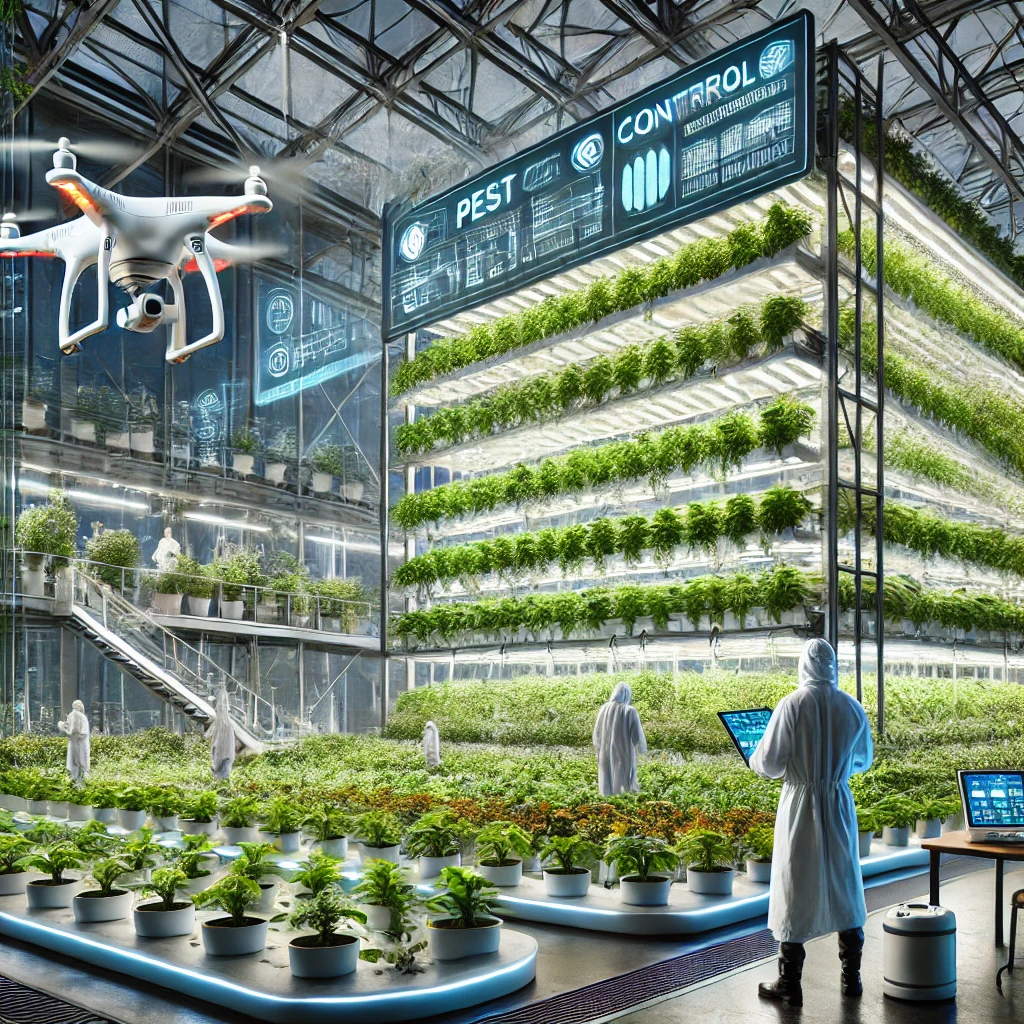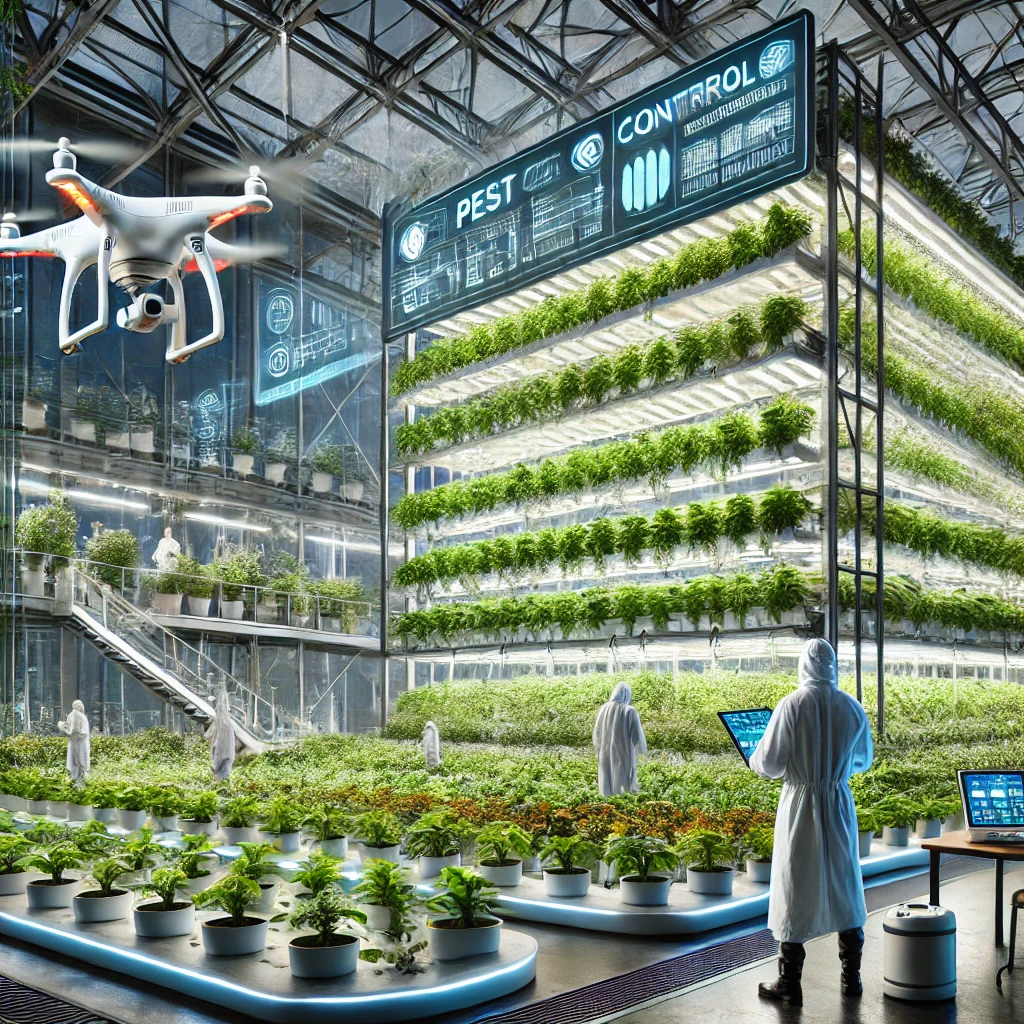
Introduction
Vertical farms represent a revolutionary approach to agriculture, utilizing stacked layers and controlled environments to grow crops in urban settings. While these systems maximize space and resource efficiency, they also present unique challenges for pest control. This essay explores innovations and best practices for managing pests in vertical farms, ensuring crop health and system productivity.
Innovations in Pest Control for Vertical Farms
Vertical farms use cutting-edge technology to address pest control challenges. Innovations include advanced monitoring systems that utilize sensors and cameras to detect pest presence early. Automated systems can analyze data in real-time, allowing for precise and timely interventions. These technologies help minimize the use of pesticides and target specific pest issues effectively, improving overall pest management efficiency.
Integrated Pest Management (IPM)
Integrated Pest Management (IPM) is essential for vertical farms. IPM combines multiple strategies to manage pests sustainably. Regular monitoring and inspections are crucial for identifying pest infestations early. Biological controls, such as introducing natural predators or using beneficial insects, can reduce pest populations without harming crops. Cultural practices, including crop rotation and sanitation, further support pest management by minimizing pest habitats and preventing infestations.
Environmental Control
Environmental control is vital in vertical farms to prevent pest issues. Maintaining optimal temperature, humidity, and light levels can reduce the likelihood of pest problems. For instance, controlling humidity levels can prevent mold and fungal growth, while adjusting light conditions can influence pest behavior. Effective air circulation systems also help minimize the spread of pests and diseases within the vertical farming structure.
Physical Barriers and Traps
Physical barriers and traps are practical tools for managing pests in vertical farms. Installing barriers like fine mesh screens can prevent pests from entering the growing areas. Sticky traps and pheromone traps can capture flying insects and monitor pest populations. Strategically placing these traps throughout the farm helps in early detection and assessment of pest control measures’ effectiveness.
Sustainable Pest Control Solutions
Sustainable pest control solutions are increasingly important in vertical farms. Organic pesticides, such as neem oil or insecticidal soap, offer eco-friendly alternatives to traditional chemicals. Integrating these solutions with IPM practices ensures effective pest management while minimizing environmental impact. Additionally, fostering a healthy growing environment through proper nutrient management and crop care can further reduce the likelihood of pest infestations.
Conclusion
Pest control in vertical farms involves addressing unique challenges with innovative technologies and best practices. Utilizing advancements in monitoring systems, implementing Integrated Pest Management (IPM), controlling the growing environment, employing physical barriers and traps, and adopting sustainable solutions are key to effective pest management. By integrating these strategies, vertical farms can achieve optimal crop health and productivity, paving the way for the future of urban agriculture.

